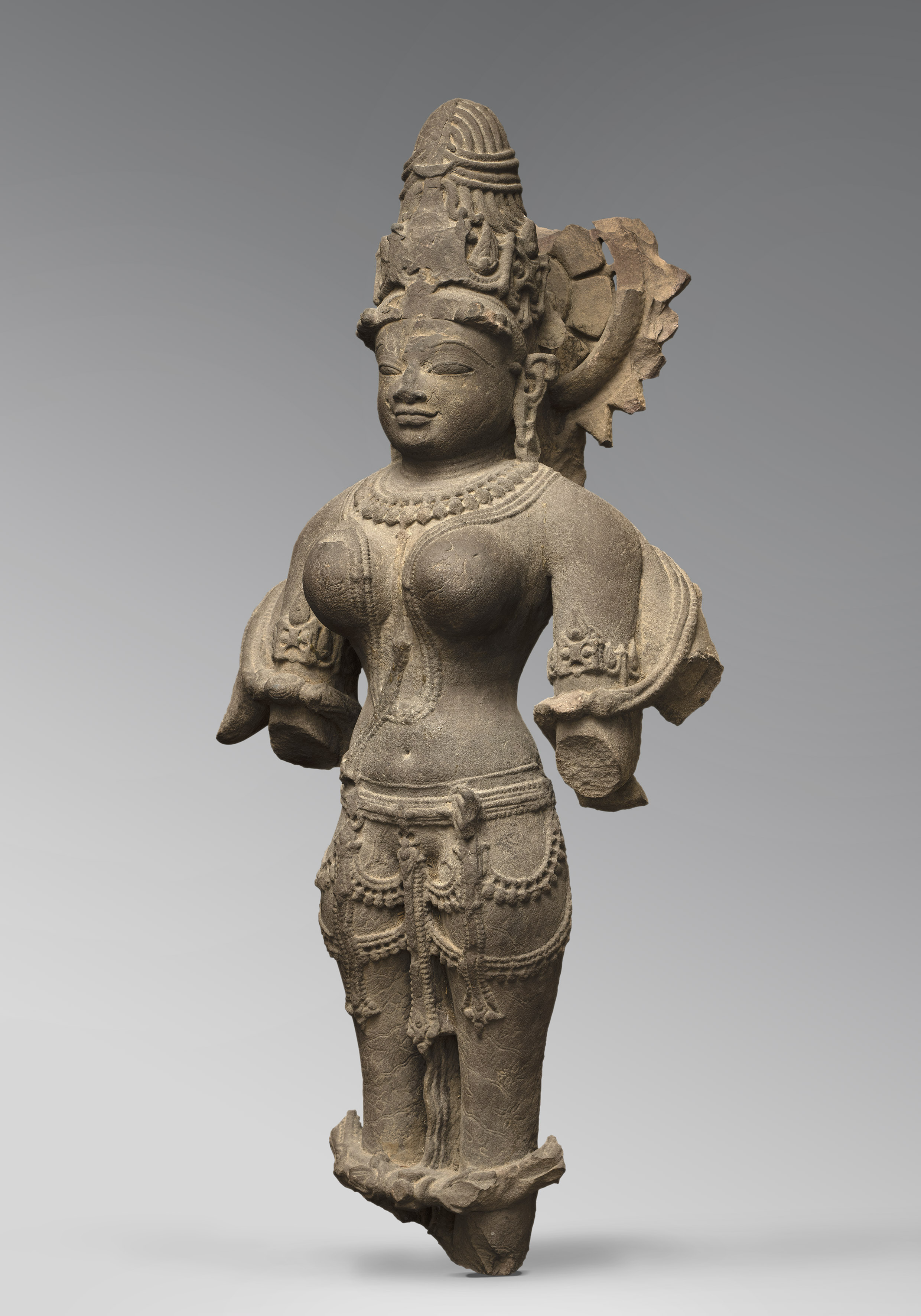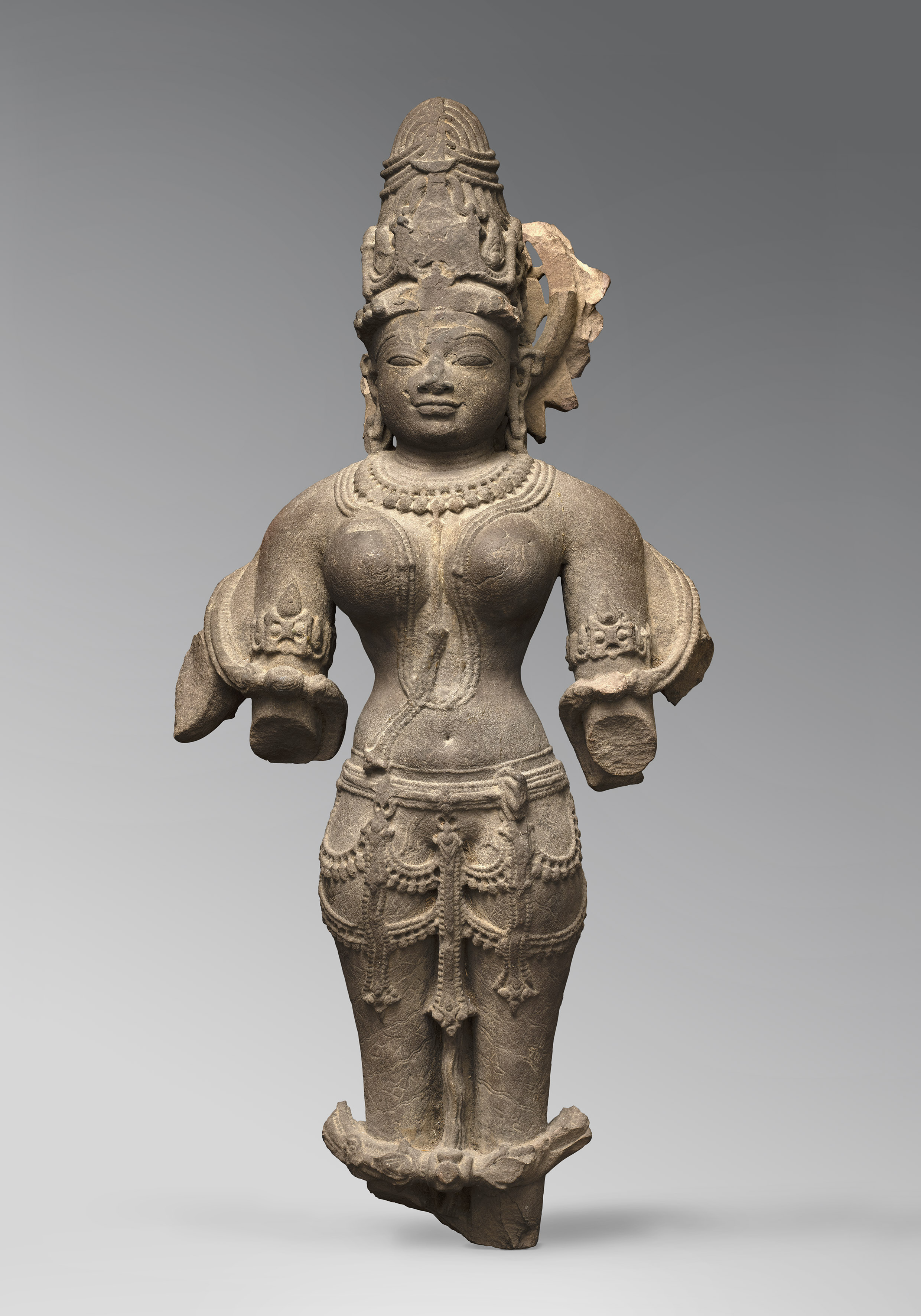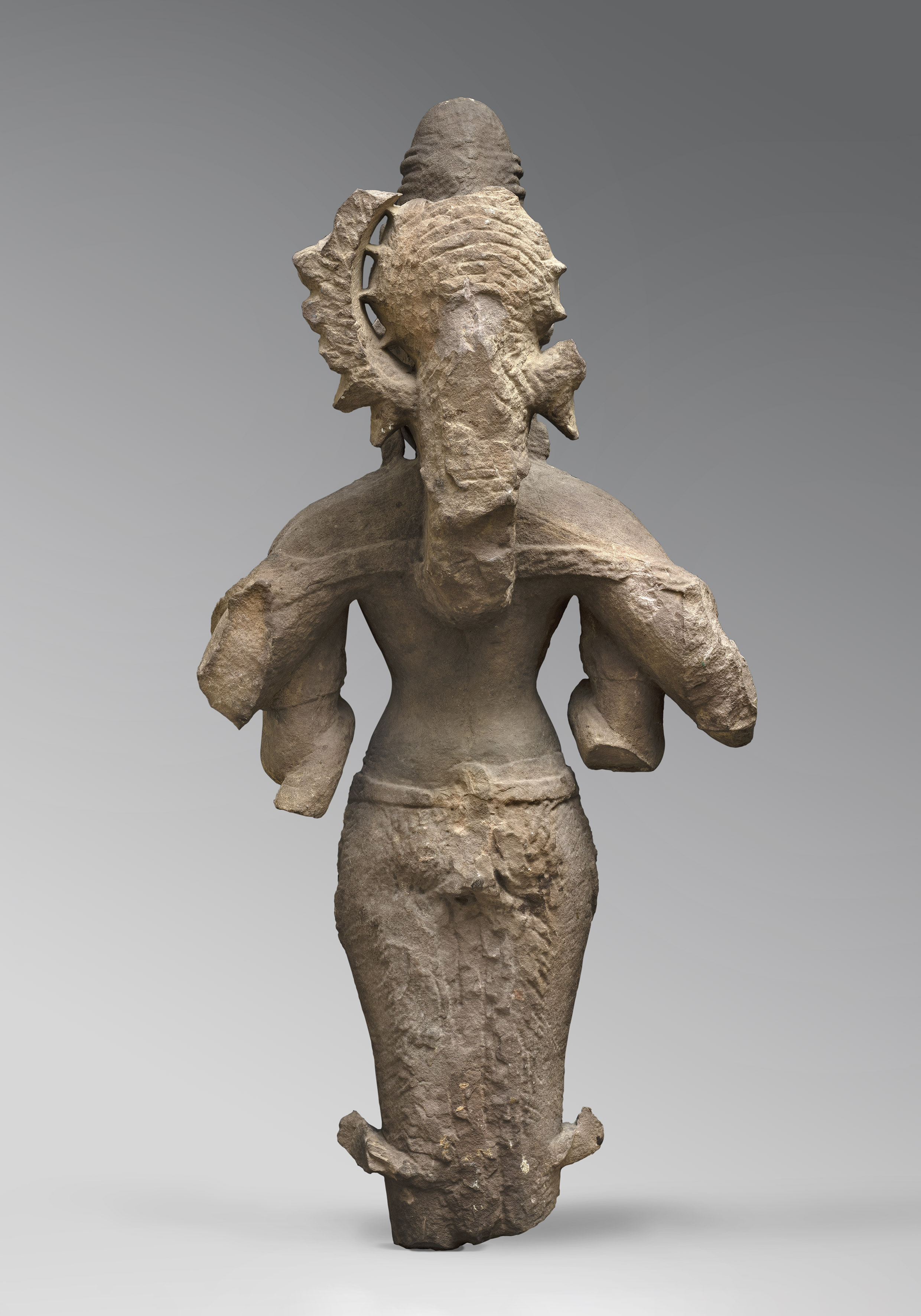


North India
10-11th century
Sandstone
H 102 cm
Provenance: Claude de Marteau, Brussels, by 1970’s
Litterature: Dehejia, Devi: The great Goddess, Washington, 1999, p.242
This almost life-size upright goddess is an outstanding example of the celebrated representation of the feminine beauty in Indian art. She wears an elaborate necklace of stylized leaf buds with a central long tassel, a multistrand necklace and armbands. The ribbons and beaded swags are symmetrically arranged across her thighs. Her hair is piled up on her head and held in place by an ornamented crown. This female figure’s bodily form is voluptuous with a powerful expression.
This goddess can be identified as a yogini, an aspect of the Great Goddess. Yoginis are tantric goddesses who were worshipped in order to harness their powers for protective and religious purposes.
From the 9th till the 12th century a number of Yogini temples were built in India; yoginis were frequently worshipped in circular temples in groups of 64. They might have supernatural and magical powers on their worshipers, leading to success and fame.
See also a related example in the Walters Art Gallery, Baltimore.